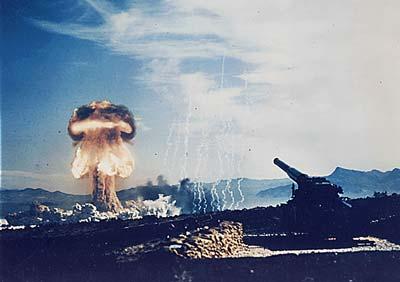
Recent news on the foreign policy front is bringing back old school anxiety about nuclear weapons. From tensions with North Korea to a questionable future for the Iran nuclear deal, we are revisiting a seventy year old question: why do nations use nuclear weapons?
Conventional wisdom from research in the Cold War era argues that nuclear weapons are about deterrence: states that have the weapons hold onto them so that the threat of a massive ‘nuclear revolution’ keeps a lid on conflict and makes everyone behave better. But recent research published in the Journal of Strategic Studies by UMN political scientist Mark S. Bell lays out a different theory.
Drawing on historical examples, Bell notes that, in many cases, governments weren’t following a simple deterrence story. Instead, they used nuclear development for a range of different goals, including everything from expanded influence on international politics to stronger independence from their allies. Nuclear weapons came into play to facilitate both conflict and compromise on the international scene.
For example, Bell argues that states facing a serious territorial threat or war can use nuclear weapons for aggression, like Pakistan or the U.S. leading up to the Hiroshima and Nagasaki bombings. On the other hand, Britain and France used nuclear development to establish peaceful independence from the U.S. as an ally after WWII. At the same time, the U.S. changed the way it used its nuclear capabilities to expand its international influence, while India used their development as a way to become more ambitious in foreign policy and develop more allies in Southeast Asia and the Middle East.
In each of these cases, according to Bell, states used nuclear weapons in pursuit of many different political goals—not just for keeping the peace according to classic deterrence theories. In a world where nuclear conflict seems thinkable again, we have to take the time to clearly understand how different nations view their weapons and their goals if we are to maintain a world safe from the emerging threats that come from different kinds of military strategy.
Photo Credit: vaxzine, Flickr CC

